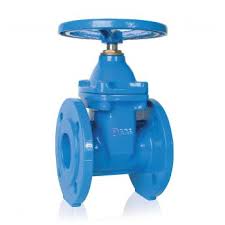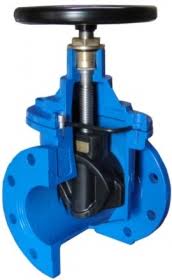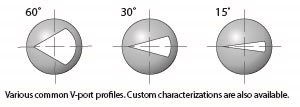Rubber Lined Gate Valve

The Application of Rubber Lined Gate Valve
The Cameron brand is renowned for its exceptional range of industrial valves, including the highly versatile rubber lined gate valve. These valves are designed to excel in a wide variety of applications, particularly in environments where corrosion resistance and leak-tight performance are paramount. The manual rubber lined gate valve offers precise flow control and shutoff capabilities, while the rubber lined gate valve factory ensures consistent quality and reliability. These valves are commonly used in the chemical, petrochemical, and water treatment industries, where their ability to handle aggressive media and withstand harsh operating conditions makes them an indispensable choice for critical infrastructure and process systems.
What Are The Types Of Rubber Lined Gate Valve?
- Standard Rubber Lined Gate Valve: This is the most common type, featuring a rubber lining on the interior of the valve body to provide corrosion resistance and a tight seal.
- High-Performance Rubber Lined Gate Valve: These valves are designed for more demanding applications, with enhanced materials and construction for increased pressure ratings, temperature capabilities, and flow characteristics.
- Bi-Directional Rubber Lined Gate Valve: This valve type can be operated in both the forward and reverse flow directions, providing greater flexibility in system configurations.
- Expanding Gate Rubber Lined Gate Valve: The gate element in these valves expands to create a tighter seal against the valve seats, improving shutoff performance.
- Double Block and Bleed Rubber Lined Gate Valve: Featuring two independent gate elements, this valve design allows for isolated maintenance or piping work while the system remains in operation.
- Automated Rubber Lined Gate Valve: These valves incorporate electric, pneumatic, or hydraulic actuators for remote operation and integration into automated control systems.
What Is Rubber Lined Gate Valve?
A rubber lined gate valve is a type of industrial valve designed for applications that require corrosion resistance, reliable shutoff, and precise flow control. The valve body is typically made of metal, such as cast iron or steel, with a durable rubber lining applied to the interior surfaces. This rubber lining provides a barrier against aggressive media, preventing direct contact with the underlying metal and enhancing the valve’s resistance to chemical attack, erosion, and abrasion. The gate element, which slides up and down to open and close the valve, is also equipped with a rubber sealing surface to create a tight, leak-free seal when the valve is in the closed position. Rubber lined gate valves are widely used in industries such as chemical processing, water treatment, and oil and gas, where their unique design and material properties make them well-suited for handling a wide range of challenging fluids and gases.
How to Select the Right Rubber Lined Gate Valve?
When selecting the appropriate rubber lined gate valve for an application, several key factors should be considered:
Media Compatibility: Carefully evaluate the chemical composition, temperature, and pressure of the media to be handled, and choose a valve with a rubber lining material that is compatible and resistant to the specific operating conditions.
Size and Flow Requirements: Determine the required valve size and flow capacity based on the system’s design parameters, such as pipe diameter, flow rates, and pressure drop requirements.
Pressure Rating: Select a valve with a pressure rating that meets or exceeds the maximum operating pressure of the system to ensure reliable and safe performance.
End Connections: Ensure the valve’s end connections (e.g., flanged, threaded, or welded) are compatible with the existing piping configuration.
Actuation and Control: Consider the need for manual, electric, or pneumatic valve actuation, as well as any requirements for remote operation, position indication, or automated control.
Installation and Maintenance: Evaluate the available space and access for valve installation, as well as the ease of maintenance and replacement of the rubber lining or other components.
By carefully considering these key factors, users can select the most appropriate rubber lined gate valve to meet the unique requirements of their specific application.
Features of Rubber Lined Gate Valve
Corrosion Resistance:
The rubber lining within the valve body provides a protective barrier against corrosive media, extending the valve’s lifespan and ensuring reliable performance in challenging environments.
Tight Sealing:
The rubber-lined gate and seat surfaces create a tight, leak-proof seal when the valve is in the closed position, preventing fluid or gas from passing through.
Abrasion Resistance:
The rubber lining is designed to withstand abrasive wear and tear, making it suitable for handling slurries, particulate-laden fluids, and other abrasive media.
Thermal Insulation:
The rubber lining can help insulate the valve body, allowing for the handling of fluids at high or low temperatures without affecting the valve’s structural integrity.
Easy Maintenance:
The rubber lining can be readily replaced, simplifying maintenance and ensuring the valve can be restored to its original condition when necessary.
Versatile Design:
Rubber lined gate valves are available in a range of materials, sizes, and configurations to suit diverse application requirements, from standard to high-performance models.
Advantages and Disadvantages of Rubber Lined Gate Valve
Advantages of Rubber Lined Gate Valve:
- Corrosion Resistance: The rubber lining provides excellent protection against corrosive media, extending the valve’s lifespan.
- Tight Sealing: The rubber-lined surfaces create a reliable, leak-proof seal when the valve is closed, ensuring efficient flow control.
- Abrasion Resistance: The rubber lining can withstand abrasive wear, making the valve suitable for handling slurries and particulate-laden fluids.
- Thermal Insulation: The rubber lining helps insulate the valve body, allowing for the handling of fluids at high or low temperatures.
- Easy Maintenance: The rubber lining can be readily replaced, simplifying maintenance and restoration of the valve’s original condition.
Disadvantages of Rubber Lined Gate Valve:
- Limited Pressure and Temperature Ratings: Compared to metal-bodied valves, rubber lined gate valves may have lower pressure and temperature ratings, limiting their use in more extreme operating conditions.
- Potential for Rubber Degradation: Prolonged exposure to certain chemicals or high temperatures can cause the rubber lining to degrade over time, compromising the valve’s performance.
- Higher Cost: Rubber lined gate valves are generally more expensive than their metal-bodied counterparts, due to the specialized manufacturing process and materials involved.
- Increased Weight: The rubber lining and reinforcing components can add weight to the valve, making it more challenging to handle and install in some applications.
- Limited Flow Characteristics: The rubber lining may slightly restrict the flow capacity of the valve compared to a full-bore metal gate valve design.

The Specifications of Rubber Lined Gate Valve
| Specification | Value |
|---|---|
| Type | Rubber Lined Gate Valve |
| Ball Material | Stainless Steel |
| Attachment Type | Flanged |
| Thread Standard | ANSI B16.5 |
| Thread Size | 4 inch |
| Body Material | Cast Iron |
| Safe for Use With | Corrosive Fluids, Slurries, Abrasive Media |
| Handle Type | Handwheel |
| Handle Material | Cast Iron |
| Maximum Working Pressure (psi) | 150 psi |
| Maximum Working Pressure (bar) | 10 bar |
| Operating Pressure | 100 psi (6.9 bar) |
The Installation Steps for Rubber Lined Gate Valve
- Site Preparation: Ensure the installation location is clear of any obstructions and that the pipeline is properly aligned and supported.
- Valve Inspection: Carefully inspect the valve for any visible damage or defects before installation. Verify that the valve’s size, pressure rating, and materials of construction are suitable for the application.
- Pipe Cleaning: Thoroughly clean the pipe sections where the valve will be installed, removing any debris, scale, or other foreign materials to ensure a proper seal.
- Valve Orientation: Determine the correct orientation of the valve based on the direction of flow. The valve should be installed with the gate in a vertical position, with the handwheel or actuator facing upward.
- Flange Alignment: Align the valve’s flange faces with the corresponding flanges on the pipeline, ensuring a proper fit and seal.
- Bolt Tightening: Evenly tighten the flange bolts in a crisscross pattern, following the manufacturer’s recommended torque specifications to create a secure, leak-free connection.
- Valve Operation: Slowly open and close the valve several times to ensure smooth operation and proper sealing. Adjust the packing gland or stem as needed to maintain proper valve stem movement.
- Leak Testing: Perform a thorough leak test on the installed valve, checking for any signs of leakage at the flanges, packing gland, or other connections.
- Documentation: Record the installation details, including the valve’s serial number, location, and any relevant operating parameters for future reference and maintenance.
The Operation Theory of Rubber Lined Gate Valve
- Valve Structure: Rubber lined gate valves, including rubber lined knife gate valves and rubber-lined gate valves, feature a valve body with a gate or knife gate that slides into the flow path to control the flow of media. The gate or knife gate is coated or lined with a resilient rubber material to provide enhanced sealing and abrasion resistance.
- Sealing Mechanism: The rubber lining on the gate or knife gate creates a tight seal against the valve’s seating surfaces when the valve is in the closed position. This rubber-to-metal contact allows for a reliable and leak-proof shut-off, even in the presence of abrasive or corrosive media.
- Flow Control: By moving the gate or knife gate in and out of the flow path, the rubber lined valve can precisely control the flow of media. When the valve is fully open, the flow is unobstructed, and when it is closed, the flow is completely stopped.
- Corrosion and Abrasion Resistance: The rubber lining provides a protective barrier that shields the valve’s internal components from corrosive and abrasive media, significantly extending the valve’s service life compared to traditional metal-on-metal gate valves.
- Thermal Insulation: The rubber lining also acts as a thermal insulator, allowing the valve to handle fluids at higher or lower temperatures without compromising the valve’s structural integrity or sealing performance.
- Maintenance and Repair: The rubber lining in these valves can be readily replaced when worn, making maintenance and restoration of the valve’s original condition a relatively straightforward process.
